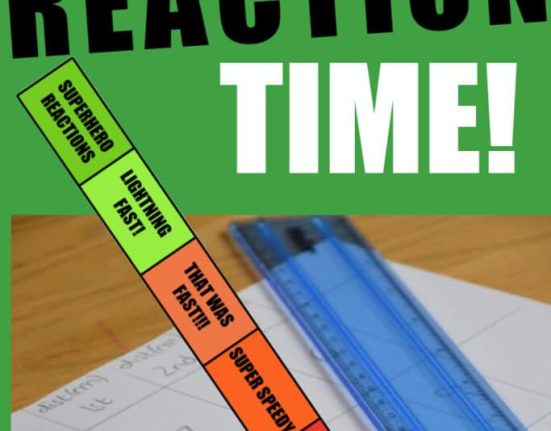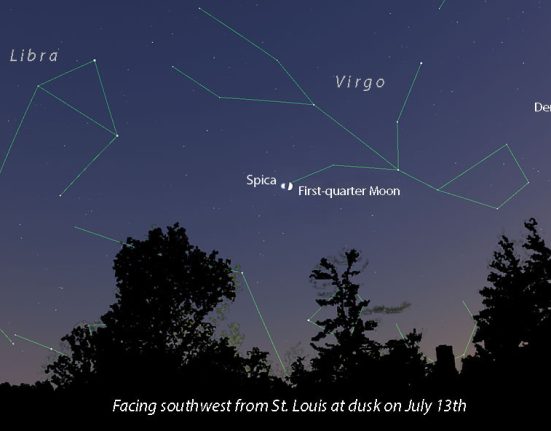
The Sun is our special star, on which we totally depend for our existence. The long days of summer, which we hope will be blessed with the best weather conditions of the year, when the Sun rises high in the sky, are ideal for getting to know our giver of life better. When thinking about astronomy, the Sun is not the first thing that comes to mind, but we would be missing out on a glimpse of an extremely dynamic world. How is it possible to see anything when the Sun is so intensely hot and bright and what will I be able to see anyway?
A small telescope with the right filter can reveal a great deal of detail at various wavelengths, even spectacularly in alpha hydrogen (at 656.3 nm), but observe sunspots crossing the solar surface, or photosphere, in white light It is perhaps the easiest and most economical method to see. and imagine the Sun in action.
See sunspots
Sunspots are temporary regions of intense magnetic disturbance where the energy below is blocked by the magnetic force. This causes the area to cool slightly compared to the surrounding surface, creating sunspots. If you look closely, you'll see that a sunspot has two parts: an almost black area called the 'umbra' (there can be several if the sunspot is large) with a much lighter region called the 'penumbra'. Sunspots can be found alone, but very often they come in groups which are then grouped into sunspot types based on their extent and structure.
Sunspots occur during an average 11-year cycle and vary in number, size, and structure of sunspots during that time. At Sunspot Minimum there are generally few or no sunspots for many days or occasionally for several weeks at a time. Little by little the number of sunspots begins to increase and their size increases. Some sunspots are occasionally large enough to be glimpsed only with your eyes looking through an eclipse viewer. After about three or four years, we typically reach sunspot maximum when the Sun never seems to be without some sunspots. This situation persists for about two or three years and then the intensity of the sunspots begins to decrease during the remaining years until we return to the sunspot minimum.
There are a good number of dedicated amateur observers who report observations of the total number of sunspots and groups each month. Having observations of the Sun on as many days as possible each month means that a graph can be created showing the rise and fall of sunspot activity. We can see from the recent sunspots that the maximum sunspots of the past have not all been the same: cycle 24, which began in 2008, was of lower intensity than the previous two, although cycle 25, which, according to recent forecasts, is already has reached its maximum or will do so at any time.
It is also very useful to find out the position of sunspots on the solar disk, which can be done using a solar latitude and longitude system, as we can plot them against time to produce a rather beautiful graph called a “Butterfly Diagram” , so-called because the plotted positions look like the wings of a butterfly.
Projecting the sun
So how can I see these sunspots? One of the simplest methods is to project the solar image using a small telescope. To do this, first insert a fairly inexpensive eyepiece into the viewfinder and cover the viewfinder if you have one (avoid using your best eyepieces as they can be damaged by the heat of the sun).
Do not look through any part of the telescope, but point the telescope toward the Sun by looking at the shadow of the telescope tube on the ground. When the shadow is smallest, a bright, fuzzy spot should appear within the shadow. Hold a piece of white paper or card about 20 centimeters behind the eyepiece to catch the bright spot. Now gently focus the telescope until the projected image is sharp. To enlarge the image, move the paper or card away from the eyepiece. You should be able to see at least one of the two sunspots on the bright side of the Sun.
A more permanent solution is to use an adjustable screen or box attached to the telescope to capture the image. If your telescope is made of plastic or uses a mirror, do not attempt to project as the Sun's heat can damage them.

Full aperture filters; glass and solar film
The alternative to the projection is the solar filter that fits securely over the front of the telescope. They are often called “full aperture solar filters.” They block all the Sun's energy except a small proportion of the light. These filters must pass strict safety tests to ensure they are safe to use as long as we follow the manufacturer's instructions.
You can choose between film-coated solar filters or glass-coated filters. Whichever you choose, they often come installed in a frame that needs to match the aperture of your telescope, so you need to choose the right one for your telescope. Film-coated filters, although cheaper, offer excellent views of the sun. Because they are easier to damage, you should check them thoroughly before using them. Glass-coated filters cost more, offer excellent views of sunspots, and are a little sturdier, but they still need to be checked before each use.



Herschel wedge
The best view of sunspots can be achieved with a Herschel Wedge (a device named after Sir John Herschel, who invented it). These can only be used on the eyepiece end of a refractor telescope (or lens). It uses an uncoated prism to reflect just under five percent of the Sun's energy into the eyepiece; the rest, including infrared and ultraviolet rays, are refracted away from the observer. It is still not safe to look at the Sun, so a neutral density filter and a polarizing filter are also required to make it safe to view.
The Herschel Wedge costs more than a full aperture filter and cannot be used on telescopes with an aperture larger than 150mm as they can overheat. The manufacturer's instructions should also be followed carefully.



Safety first always
Never make your own sunscreen from items found around the house. This is because, while it is easy to find something dense or reflective enough to obscure the Sun, neither will block infrared or ultraviolet rays, causing permanent eye damage or even blindness. Never use solar filters that screw onto the telescope eyepiece, as they are now known to be unsafe.
Normally in astronomy we like the aperture of telescopes. The light from most nocturnal stellar objects is quite low, so the larger the aperture the better, as it collects more light and helps us see more. For solar astronomy, a small refracting telescope with an aperture between 60 and 100 mm is best, preferably in an equatorial mount to allow you to track the Sun. Try to choose an eyepiece that allows you to see the entire solar disk at once. This will be achieved with an eyepiece magnification of approximately 60x and, if the air is stable enough, use a slightly higher magnification for close-up views.
The Sun, our closest star, is a very dynamic and constantly changing object. Both amateur and professional astronomers have discovered that it is full of surprises and that little by little it reveals its secrets. It's worth a look.













Leave feedback about this